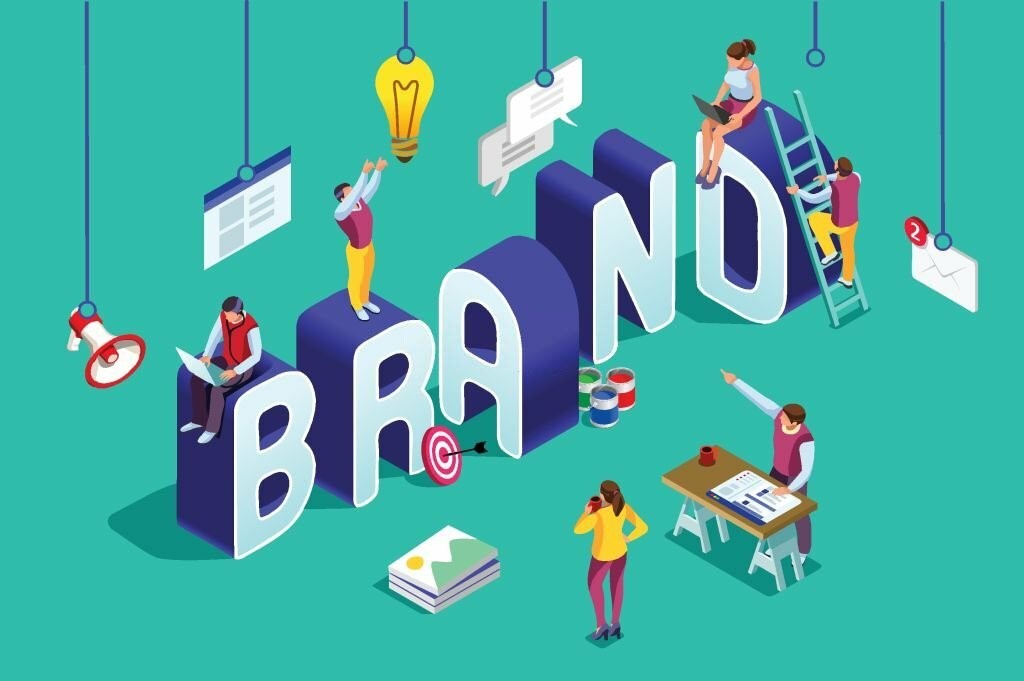A strong brand personality often sets successful businesses apart from their rivals in the business world. For a brand to have a strong personality, it needs a clever logo. A logo is more than just a picture; it’s the public face of a company, showing what it stands for and what it stands for. To make a good image, you must think about it carefully, be creative, and know what the brand stands for. We’ll talk about the art of logo creation and give you some great tips on making an emblem that people will remember for a long time.
Understanding The Importance Of A Logo
A logo is a brand’s visual representation of its personality and is very important for making the brand known and present. As the first thing people see when interacting with a brand, it’s an important part of any business’s marketing and branding plan. A well-designed logo captures the essence of the business, its values, and its mission, leaving customers with a strong impression. It can make people feel strong feelings, grow trust, and make people loyal to a brand. Whether a sleek, modern emblem or a classic, timeless design, a logo tells people what the brand is about and sets it apart from rivals. This makes it an important tool for building a brand.
Investigating The Target Market And Brand
Digging into the intricacies of your target market and company is crucial when designing a logo that is both memorable and effective. The first step in our procedure is to research the demographics, preferences, and behavior of your target audience. Our logo designers will work with you to learn about your company and its ethos so that the final product accurately represents your company.
Emphasizes originality, timelessness, and scalability while connecting your logo’s graphic aspects with your brand’s narrative. Choose the right hues and typefaces to evoke the feelings and character you want. Peak logo design can help you create a logo that not only represents your brand but also appeals to your ideal customers.
Ease & Adaptability
Easy use and flexibility are crucial when designing a logo. Good logos are easy to recognize and remember. People comprehend it fast and remember it because of its simplicity. Logos used on several media and platforms in the digital age must be adaptable. Well-designed logos are easy to see on large posters and small phone screens. It should also be copyable in black and white or other colors without changing. Logos that are easy to use and adapt help establish brand personality and connect with a large audience.
Uniqueness And Eternity
The two main components of a good logo design are uniqueness and eternity. A unique design sets a brand apart from competitors and helps people remember it immediately. It makes the company stand out and makes an impression on customers that lasts. But eternity talks about how the image doesn’t change over time. A brand made to last will always stay in style, so it will continue to be important and relevant for years. People feel like they can trust the brand because they associate it with quality and stability that lasts. Uniqueness and eternity are the two most important parts of a strong logo. They help the logo communicate the identity of a brand and build a strong, long-lasting link with its audience.
Including Narrative And Brand Values
A compelling logo requires a complex narrative that intertwines with a brand’s basic principles. It’s more than just making an image; it’s about telling a story. Each aspect, from the color palette to the fonts used, must be consistent with the brand’s narrative. A logo for an eco-friendly company, for example, might utilize natural colors and organic shapes to create a tale of sustainability and responsibility. Such logos elicit an emotional response from the audience, creating brand loyalty. The logo’s narrative should reflect the brand’s mission and the core of what it stands for. Through visual storytelling, a logo becomes more than just a symbol; it becomes a strong emblem encompassing the brand’s heart and soul.
Selecting The Right Font And Colors
Selecting the proper fonts and colors is an important component of logo creation. Fonts communicate the brand’s identity, whether bold and authoritative or pleasant and welcoming. The typography used should be consistent with the brand’s values and message. Similarly, colors can elicit specific emotions and connections. When choosing a palette, keep color psychology in mind to ensure it resonates with your target audience and industry. A well-chosen color scheme and typography produce a unified visual experience that reinforces the brand’s identity. Consistency in these characteristics across multiple branding mediums and platforms improves brand identification and ensures the logo successfully communicates the brand’s essence.
Testing And Getting Input
Logos should be put to the test and critiqued at every stage. The effectiveness, scalability, and versatility of the logo across many mediums and settings are all factors in the testing process. It guarantees that the logo will always be effective and consistent.
Feedback from several parties, such as intended users and designers, is also vital. If the logo is well received, it can be refined to represent the brand’s values better and communicate with its intended audience. Neglected problems or chances for enhancement can be uncovered through feedback. Designers may strengthen the logo’s impact and popularity with consumers and strengthen the bond between the company and its target demographic by considering different perspectives.
Respecting Adaptability And Scalability
Logo design needs to put flexibility and adaptability first to work in the digital world. Websites, social media, and mobile apps are just a few channels where a logo must maintain its visual integrity and legibility. Furthermore, logos should think about cultural differences to connect with people all across the world. By prioritizing flexibility, you can ensure your logo will appeal to customers in all markets without losing its distinctive character. Modern logos must be scalable and flexible to impact today’s globally interdependent and culturally varied society.
Hiring A Qualified Designer
A qualified designer is required for the creation of a successful logo. A professional designer has experience, imagination, and an awareness of design theory. Their expertise allows them to interpret your brand’s mission and create an iconic symbol that will connect with consumers. They know the latest trends and can make sure your brand always looks updated. Hiring a professional designer is a long-term bet on the success of your business, as their efforts will lay the groundwork for a recognizable and trustworthy visual identity among your target audience. Their input is priceless in developing a logo distinguishing your company from its competitors.
Sustaining Uniformity Throughout Branding Components
To build a strong and unified brand personality, it’s important to keep your branding elements consistent. This level of uniformity is very important for affordable website design and development services in UK. Your online presence must fit in with your brand’s identity. This includes the logo, the colors, the fonts, and the general design style. If you use the same visual language and messaging style on your website, it will become an extension of your brand, making it easier for people to recognize and believe you. This unified approach to both design and content not only makes you look more professional but also gives your customers a memorable and powerful online experience. This makes you stand out in the UK web services market, which is very competitive.
Conclusion
In conclusion, logo design is a detailed procedure requiring familiarity with the business, its intended demographic, and the competitive landscape. A logo’s design should reflect the brand’s personality, target audience, and overall goals. A logo’s ability to serve as the cornerstone of a solid brand identity rests on its adherence to the principles of simplicity, originality, and versatility, as well as the incorporation of brand values and storytelling. A striking logo can catapult a company to new heights, making a lasting impression on consumers and carving out a distinctive spot in the market via rigorous research, collaboration with professionals, and keeping consistency across branding elements.


